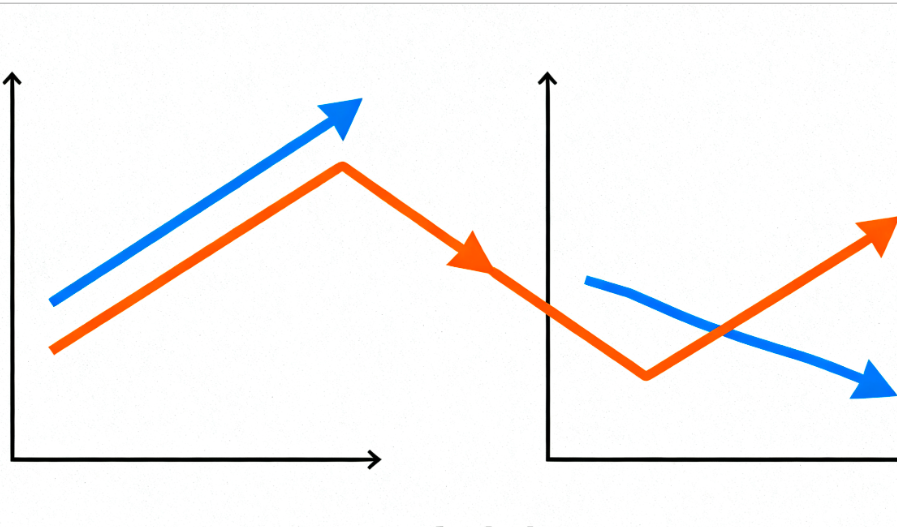
In the financial markets of October 2025, a series of regional bank events emerged like cockroaches, exposing deep cracks in the credit system. The recent disclosures from Zions Bancorporation (hereinafter Zions) and Western Alliance Bancorporation (hereinafter Western Alliance) are not isolated but intertwined with similar issues at First Brands and Tricolor, collectively pointing to a collapse of trust in collateral. This cannot be simply dismissed with the label of fraud; it is a systemic risk embedded within the context of macroeconomic shifts and monetary tightening. Based on recent events, this article analyzes the causes and impacts of collateral problems and their connection to global economic dynamics.
I. The Emergence of Collateral Problems: Starting with Zions and Western Alliance
On October 16, Zions and Western Alliance successively disclosed credit issues involving Cantor investment funds, causing market tremors. Zions provided revolving credit lines to Cantor II and Cantor IV funds years ago for commercial real estate mortgage loans. These loans were supposed to be secured by first-priority collateral, but investigations revealed that many notes had been transferred to other entities, with some already foreclosed or facing imminent foreclosure. This left Zions's credit exposure unsecured, with potential losses reaching $50 million, and it filed a lawsuit to recover over $60 million. Western Alliance faced similar difficulties, where assets in its collateral arrangements were misappropriated, turning originally secure credit into unsecured exposure. The bank also filed a lawsuit, accusing Cantor Group V LLC of fraud, but emphasized its collateral coverage obligations and maintained its 2025 financial guidance.
These events stem from the market frenzy of the low-interest-rate era. In recent years, banks were eager to "make deals," neglecting due diligence, shelving documents, and pinning their hopes on the "perfect economy" proclaimed by Fed Chairman Jerome Powell. However, as economic pressures mounted, distressed funds, fighting for survival, began double-pledging or misusing collateral. As reported by the Wall Street Journal, this is not an isolated case but a common gray area in the shadow banking and private credit sectors.
Similar problems emerged as early as September. Tricolor Holdings filed for bankruptcy due to double-pledging of subprime auto loans, with warehouse lenders alleging fraud; approximately 40% of active loan vehicle identification numbers were invalid, triggering judicial investigation. First Brands Group filed for Chapter 11 bankruptcy on September 29, with creditors claiming accounts receivable and inventory had been multiply financed, missing $2.3 billion, with liabilities exceeding $10 billion, affecting several international banks. JPMorgan Chase CEO Jamie Dimon warned on October 14 that these are "cockroaches," often signaling more problems to come once they appear.
The media calls it "fraud," but the essence is collateral abuse. In the Eurodollar system, collateral is the core of liquidity circulation. Once trust collapses, the entire system's operation is hindered, leading to a credit crunch. The Zions incident and others caused a sharp drop in bank stocks. Although they rebounded the next day, the knee-jerk reaction reflected investor anxiety about broader risks.
II. Macroeconomic Background: From "Forgetting Growth" to "Remembering Recession"
The collateral crisis is embedded within a global macroeconomic turning point. The 2023 banking crisis (SVB collapse, Credit Suisse incident), although downplayed by the mainstream, remains fresh in market memory. The bond market issued warnings: the German curve and US Treasuries reflect long-term consequences.
The current economy is transitioning towards the flat part of the Beveridge curve. In his speech on October 14, Powell pointed out that the job market is weakening, with low hiring and low layoff trends persisting, increasing unemployment risks. The Beveridge curve depicts the relationship between the unemployment rate and the job vacancy rate: when it flattens, it signals recession. The July non-farm payroll report was negative, and data since August has been weak. Companies are shifting from "forgetting to hire" to "remembering to lay off." This affects consumers' ability to repay debt, leading to rising default rates; if small and medium-sized enterprises lay off workers, their debt service capacity deteriorates, similar to the plight of First Brands.
From a global perspective, China also shows a flattening Beveridge curve and slowing growth. Geopolitical risks (such as tariffs), although delayed, have not disappeared. The shadow banking expansion ignored risks, and now the economic slowdown is triggering the consequences of "credit folly": more companies are on the brink of bankruptcy, and collateral problems are frequent.
III. Monetary Tightening Signals: The Fed's Repo Facility Alarm
The collateral cloud intertwines with monetary tightening. The Fed's Standing Repo Facility (SRF) borrowed $6.5 billion on October 15, marking the first significant use outside a quarter-end, signaling liquidity tightening. The mainstream blames Quantitative Tightening (QT), but as in the 2019 repo crisis, it's not about reserve levels but risk aversion causing dealers to be unwilling to circulate reserves, cash, and collateral.
More signals:
-
Repo fail rates have risen since the jobs report, indicating impaired collateral circulation.
-
Foreign official reserve assets have seen significant net sales since April. July data showed private net purchases of $72.4 billion and official net purchases of $6.4 billion, but the overall dollar shortage is evident. The 2020 crisis utilized $161 billion; the current scale is similar, alleviating Eurodollar tightening.
-
USD Exchange Rate: The Euro weakened, and the DXY strengthened, reflecting dealers charging higher fees for dollar access.
These align with collateral problems: under tightening, banks re-examine collateral, leading to more exposures.
IV. Market Reaction and Systemic Risk
On October 17, markets experienced severe shocks: gold soared to a record high, gaining over $120 per ounce in a single day (later retreating), reflecting safe-haven demand. The two-year US Treasury yield fell to 3.41%, and the ten-year yield fell below 4% to 3.99%; bull steepening confirmed the consequences of tightening. Bank stocks plummeted, showing anxiety.
The Eurodollar system relies on trust in collateral. Its collapse would freeze liquidity, similar to 2008 (though not a repeat). Shadow banking amplifies risks: lack of regulation and massive credit scale. Currently, the economy is tilting towards recession, tightening is intensifying, and more companies are abusing collateral, creating a chain reaction.
The rise in Bitcoin is misinterpreted as a USD collapse; it actually correlates with the Nasdaq and is unrelated to the dollar shortage.
V. Outlook and Implications: Filtering Out the Noise, Examining the Hidden Truth
Collateral problems mirror the macroeconomic inflection point. From Zions to global bonds, everything points from an optimistic bubble to a wake-up call about risk. Although the Fed "won" the 2023 battle (BTFP), the market is alert. The flattening Beveridge curve预示着 rising unemployment, increasing defaults, and worsening collateral abuse.
Investors beware: the mainstream narrative obscures the truth. The real issues are the structural flaws of the Eurodollar system: dealer aversion, dollar shortage, and shadow credit folly. Ignoring these will lead to repeating past mistakes.
It is recommended to delve into monetary signals: interest rate swaps, repo fails, reserve flows. These "hidden truths" are obvious but obscured by noise. Resources like Eurodollar University help interpret the market, not authoritative statements.
In conclusion, events like Zions serve as a warning bell, reminding us of the system's fragility. As the economy "remembers recession," a collateral collapse could trigger a broader crisis. Only by examining early and filtering out the noise can we weather the storm.
















